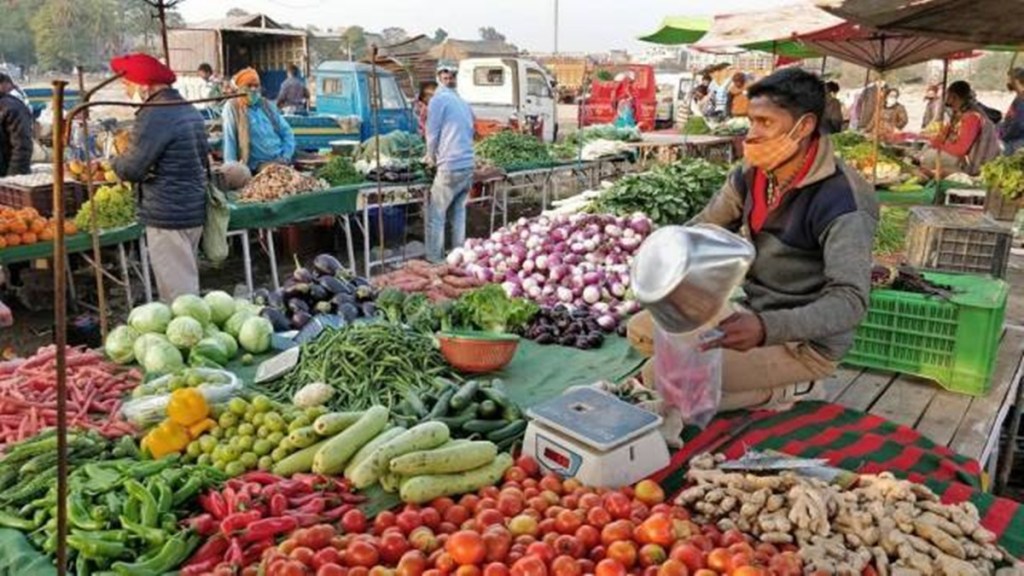India’s retail inflation declined to a 25-month low of 4.25 per cent in May on favourable base effect and also on account of softening prices of food and fuel items. The supply-side measures taken by the government to contain prices of essential food items such as wheat and pulses augurs well for food inflation, said Rajani Sinha, Chief Economist, CareEdge Ratings. Food Inflation was at 2.91 per cent in May, lower than 3.84 per cent in April. The food basket accounts for nearly half of the CPI. “The CPI inflation came broadly on expected lines supported by a favourable base and softer increase in food prices. Despite the moderation, cereal inflation continued in double digits whereas milk, pulses, sugar and spice inflation firmed due to limited supply,” she said.
At 4.25 per cent, retail inflation is the lowest since April 2021 when it was 4.23 per cent. This is the fourth straight month when retail inflation has declined and the third month in a row that CPI based inflation remained within the RBI’s comfort zone of below 6 per cent. Inflation based on the CPI stood at 4.7 per cent in April and 7.04 per cent in May 2022.
“May CPI inflation at 4.25 per cent was lower than expectations and benefitted from a favourable base effect as well as further fall in food inflation. Food inflation benefitted from a sequential fall in prices of fruits and oils even as prices of eggs, meat, milk, vegetables, and pulses continued to increase partly reflecting seasonal impact too,” said Suvodeep Rakshit, Senior Economist, Kotak Institutional Equities.
According to Dharmakirti Joshi, Chief Economist, CRISIL, the four factors that have influenced the downward trajectory of inflation in the last few months, are:
1) strong base effect
2) a fall in global oil and commodity prices. The global energy index fell an average 31.1 per cent on-year in the last four months, while the metals index is down 17 per cent on average
3) easing supply chain pressures leading to better availability of inputs and reduced pressure on prices
4) easier food inflation as the rabi crop enters the market — sequentially, food inflation was only 0.1 per cent up on a seasonally adjusted on-month basis, compared to 0.3 per cent in the preceding month.
He further stated that CPI inflation is expected to average 5 per cent this fiscal from 6.7 per cent in the last. Meanwhile, Rajani Sinha said that uncertainties on the weather front and volatile crude oil prices pose upside risk to the projections.
Effect on RBI MPC’s decision on interest rate
Earlier last week, the Reserve Bank of India (RBI) had kept policy rates unchanged at 6.5 per cent and projected retail inflation for the current fiscal to average at 5.1 per cent, with June quarter inflation pegged at 4.6 per cent. The RBI will see this print favourably as it remains well within its estimates, said Suvodeep Rakshit. “We continue to pencil in the repo rate to remain unchanged for an extended period subject to global growth prospects, central bank actions, and domestic growth prospects,” he said.
Meanwhile, Dharmakirti Joshi said that with growth slowdown seeping in and inflation moderating, there is a possibility of rate cuts by the end of this fiscal. “With rabi harvest entering the market, some respite for cereal and pulses prices could be felt in the next 2-3 months. However, any distortion in rains could bring a reversal of gains in categories experiencing low/easing inflation (vegetables and edible oils), or worse, keep inflation elevated in cereals, which are experiencing double digit inflation,” he added.
Nikhil Gupta, Chief Economist, MOFSL Group expects inflation to stay below 5 per cent for the next 3 months, “Overall, inflation data was good. We expect it to stay at 4.5 per cent for the next 3 months, before dipping towards 4 per cent in Sep 2023. It doesn’t mean a rate cut is imminent but no more rate hikes in India.”
Agreed Ranen Banerjee, Partner, Economic Advisory Services, PwC India, as he maintained that it’s too premature to say whether rate cuts will begin within this financial year as “there are several moving pieces and the MPC will have to take a call based on incoming data and external central bank actions on rate”. He added, “We can expect a rate cut only after the US Fed indicates a reversal of its rate action. The yields will in any case soften with those expectations and with growth holding up, the MPC will be loathe to use the ammunition of rate cut too soon.”
